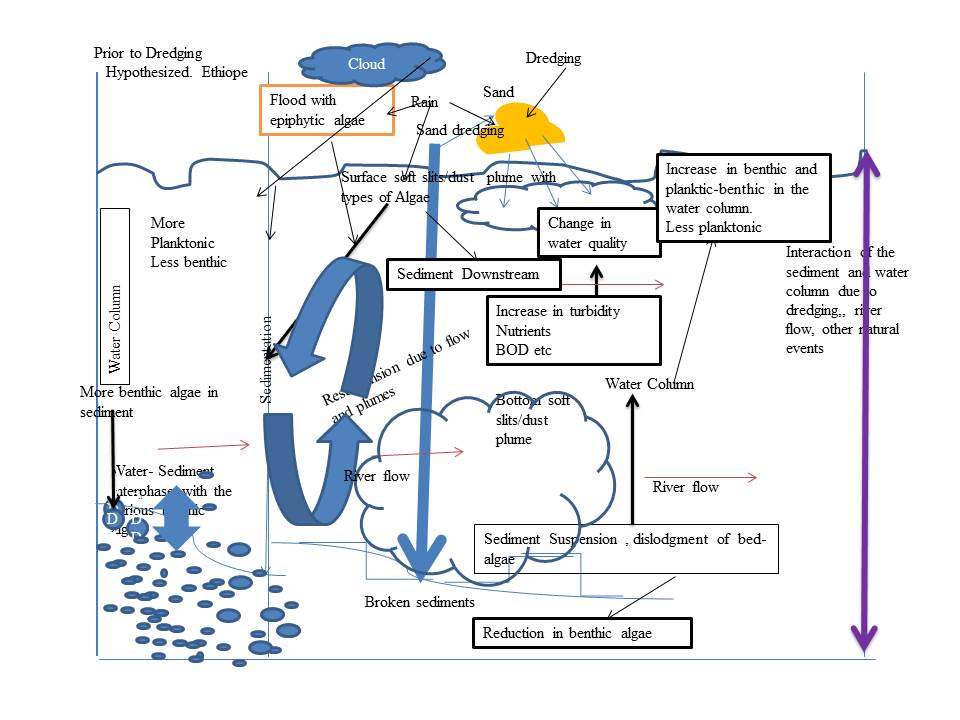
Different aquatic ecological zones exhibit different gradients present heterogeneous algal composition. The algal community in the water column and sediment with certain environmental factors were screened monthly for twelve months with standard methods, to ascertain disparate in algal distinction. Air and water temperature, conductivity, water depth, dissolved oxygen and nutrients were the primary factors that influenced the algal abundances and diversities. 90% of the algal communities were benthic (33 species) and planktic-benthic (21) with 10% truly planktonic (6) species. Comparatively, the water-column benthic and planktic-benthic surpasses the benthic species associated with the sediment. The PCA on the habitat- type abundance revealed that 99.5% benthic algae in the water column are responsible for the total algal- abundance variance. Species richness and Shannon diversity indices were low, which ANCOVA and Levene tests demonstrated significantly equal and homogeneity of algae respectively between the studied zones. The linear relationships between the algae in the water and sediment zones were non-significant (p>0.05). The Euclidean algorithm confirmed algal community similarity in the water column and sediment. Species diversity limits, a high proportion of benthic algae in the planktonic, and significant homogenous algae in water and sediment. Signatures sediment destruction, breaking and dislodgement and uplifting of associated bottom algae, and the constant mixing of the water column and sediment due to sand dredging in the study area. Machines and human-dredging has exacerbated the abundance of benthic algae in the water column.
Total file downloads: 1